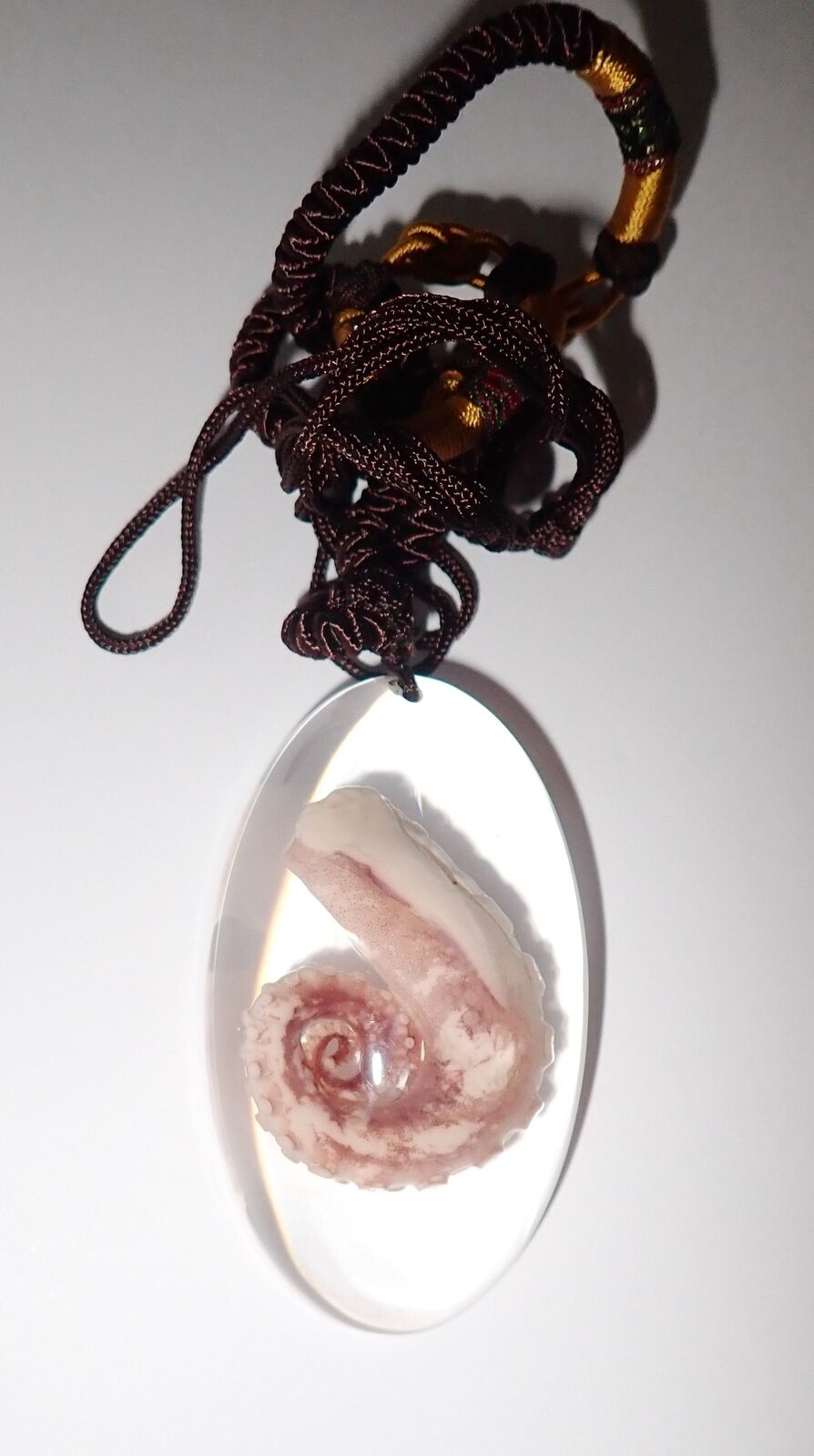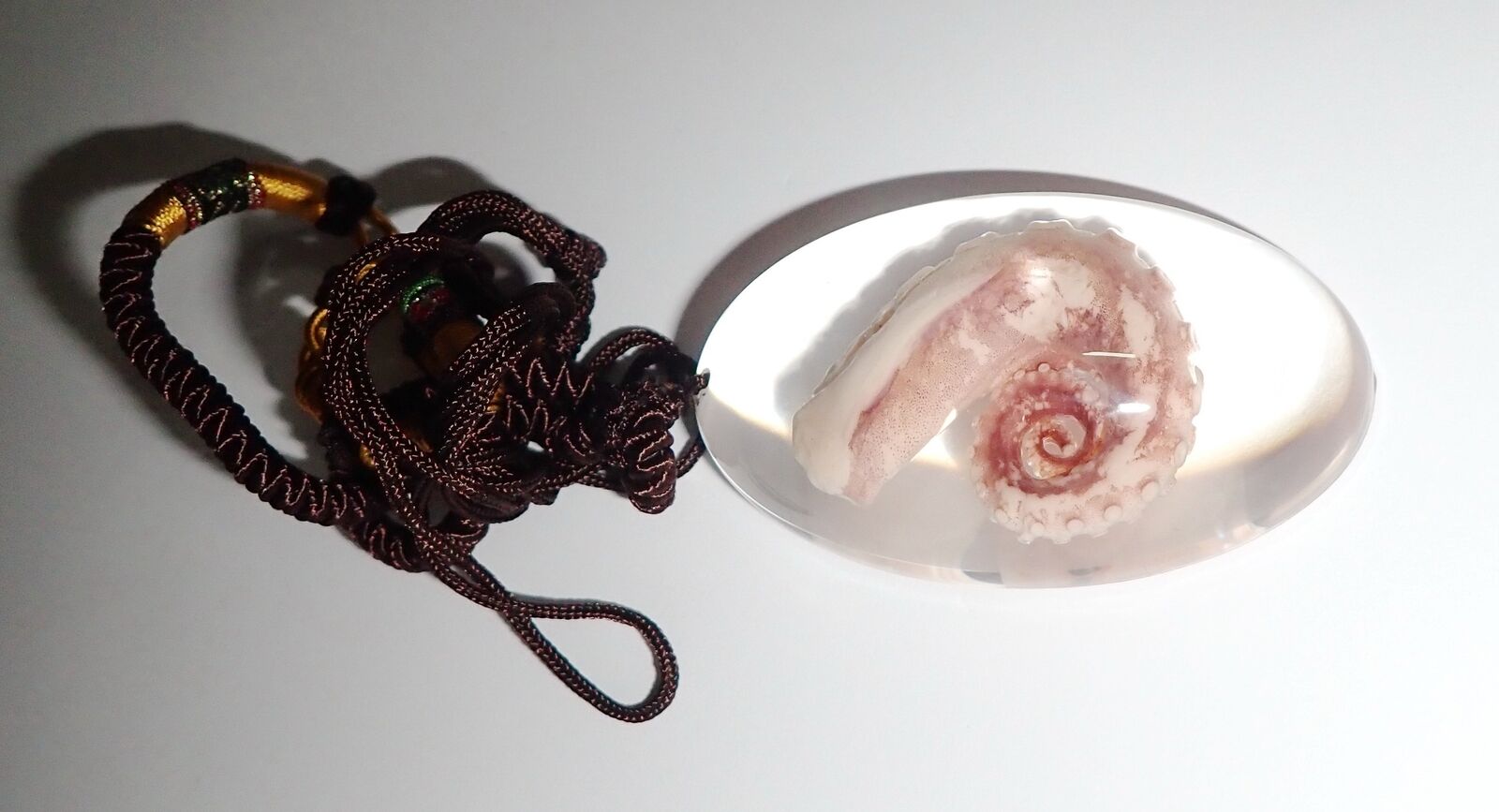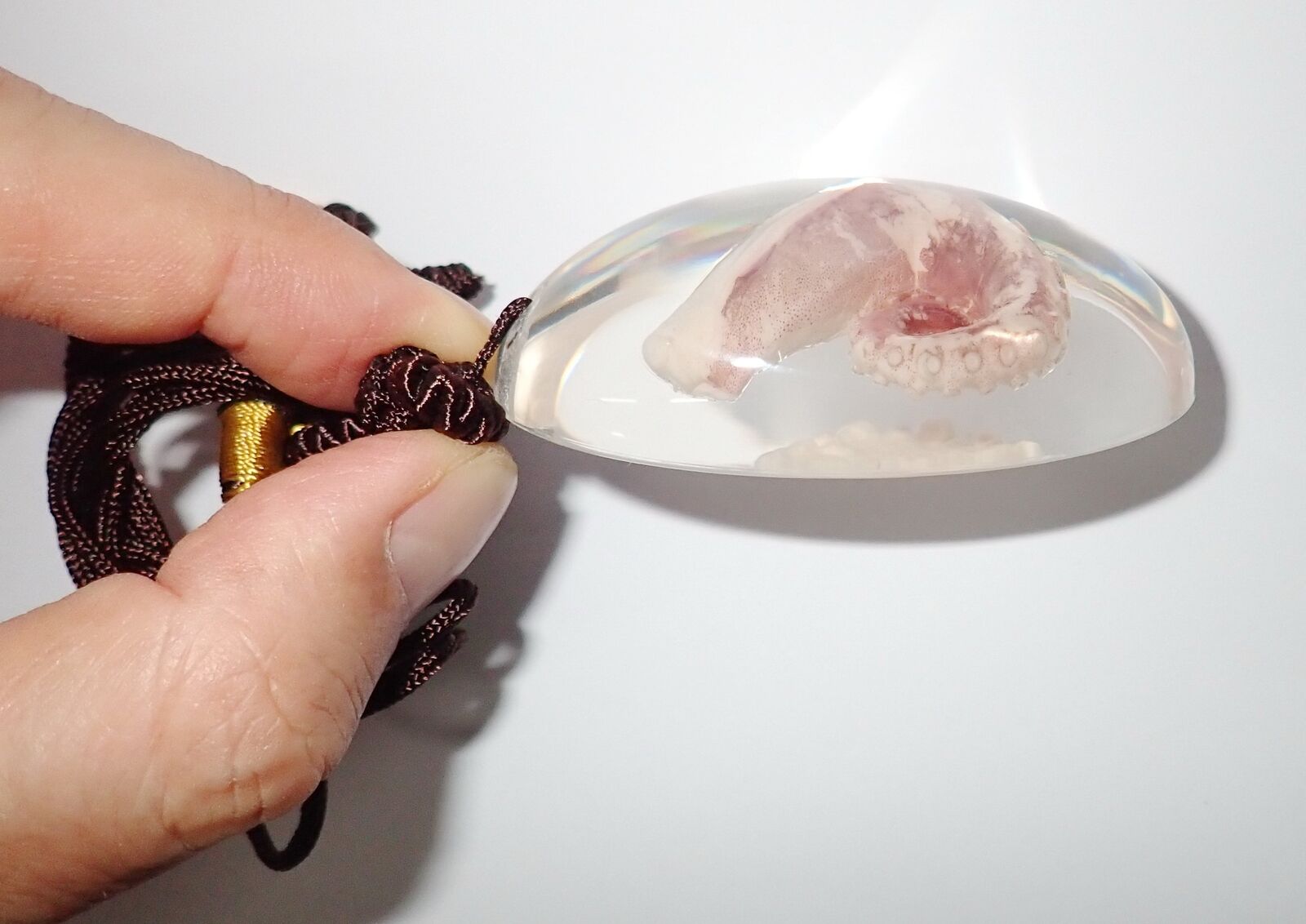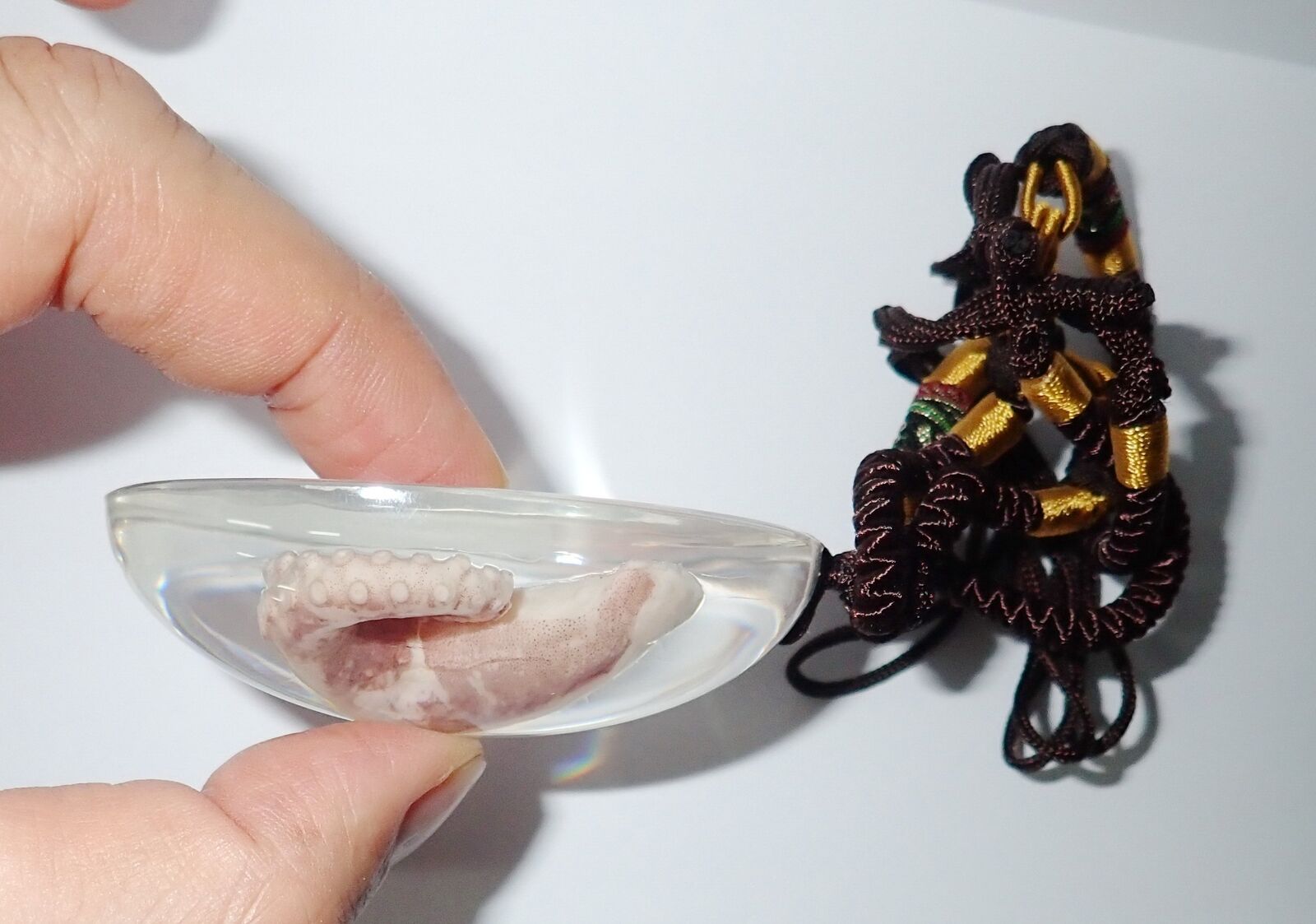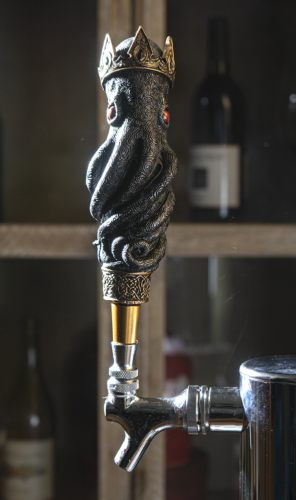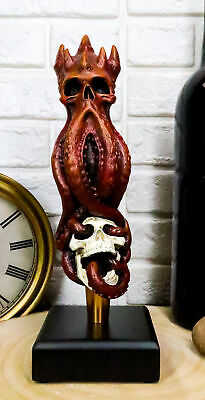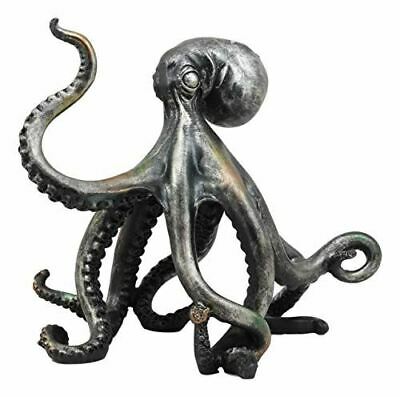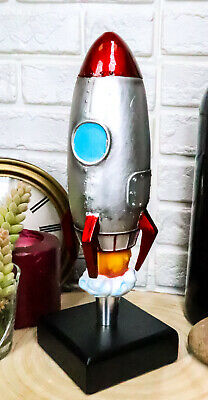-40%
Common Octopus Tentacle specimen in Large Clear Acrylic Necklace SD83
$ 7.91
- Description
- Size Guide
Description
Large Necklace (SD83 - Clear)Real Tentacle of Common Octopus (Octopus vulgaris) specimen encased in clear lucite material. Safe, authentic and completely unbreakable product put real Octopus right at your fingertips!
Size of the Octopus Tentacle is 3.0x2.5 cm (1.2x1.0 inch).
Size of the lucite block is 5.8x3.5x2.4 cm (2.3x1.6x0.9 inch).
Weight of the keychain is 45 g and 60 g with packing box.
It is a beautiful necklace and is also a very good collectible item for every body.
Selltotheworld
From all around the world
Common Octopus Tentacle specimen in Large Clear Acrylic Necklace SD83
Large Necklace (SD83 - Clear)
Real
Tentacle
of
Common Octopus (
Octopus vulgaris
)
specimen encased in clear lucite material. Safe, authentic and completely unbreakable product put real Octopus right at your fingertips!
Size of the Octopus
Tentacle
is 3.0x2.5 cm (1.2x1.0 inch).
Size of the lucite block is 5.8x3.5x2.4 cm (2.3x1.6x0.9 inch).
Weight of the keychain is 45 g and 60 g with packing box.
It is a beautiful necklace and is also a very good collectible item for every body.
This is a handmade real animal specimen craft. Each one will be a bit different (specimen size, color and posture) even in the same production batch.
The pictures in the listing are just for reference as we are selling multiple pieces with same pictures.
***
Common Octopus -
Octopus vulgaris
Class: Cephalopoda Order: Octopoda Family: Octopodidae Genus: Octopus Species: vulgaris
Length: 25 - 36 inches
Weight: 10 - 15 lbs
Offspring: 100000 - 500000
Life Span: 1 - 2 years
: The Common Octopus reaches 24 to 36 inches in length. The arms are lined with suckers. The skin is smooth and has special pigment cells that make it possible for the octopus to blend in with the surroundings. These pigment cells have three bags filled with different colors, which are adjusted until the background is matched. Coloration reflects the octopus mood. White is for fear, red is for anger, and brown is the usual color. The octopuses lack any internal shell. Their closest relatives are the chambered nautilus, cuttlefish and squids.
: The Common Octopus is an active nocturnal predator that feeds mainly on crustaceans, fish and bivalves. They leave their dens at dusk to go for hunting trips, and return at dawn. It happens that they search for food during the day, but those trips are of much shorter duration. New research have found that the Common Octopus actually stockpile food. On dives, researchers discovered piles of living bivalves around the burrows where the octopus lives. The octopus can then pick them up and bring them to their shelter whenever they are hungry.
: The Common Octopus is found world-wide in tropical, subtropical and temperate waters. It prefers coastal waters, and can live both in the shallows and down to a depth of 500 feet.
: As tiny hatchlings, the Common Octopus becomes food for many other species of animals. There are also octopus fisheries, which land 20,000 to 100,000 tons of octopuses yearly. The octopus is caught using octopus pots, plastic traps that the octopus mistakes for a safe shelter.
: The Common Octopus is normally solitary and territorial. It finds a home in a cavity or digs a burrow for itself, and leaves it only to feed or reproduce. They often protect and hide their homes with shells, stones and other solid things that they gather. Members of this species are perfectly adapted to live in very different habitats. They are experts at camouflaging themselves by changing their color, skin texture and posture. When an octopus feels threatened, it usually changes its body color and tries to escape while releasing ink. This purple-black cloud confuses the enemy and may give the octopus enough time to jet away to safety. The ink is toxic in high concentrations.
: In early spring, adult octopus move closer to the shore for spawning. Common Octopuses have separate sexes, and fertilization is internal. A male and a female can mate with each other several times, but they may also mate with other individuals. Within 2 months after mating, the female releases up to 500,000 eggs. They are laid in shallow water and are always attached to a substrate. Crevices between rocks and coral reefs provide suitable shelter. On sandy or muddy bottom, eggs are laid in empty shells or in man-made objects such as cans, bottles or tires. The female cares for the eggs by gently cleaning them with her suckers, and provides them with oxygen by squirting them with streams of water. She also defends them from predators until they hatch. The time that it takes for the embryo to develop, depends on the temperature and size of the egg. Soon after the eggs have hatched the female dies. The tiny hatchlings are carried about in water currents where they feed from plankton. After about a month they settle to the bottom. Only one or two out of 200,000 hatchlings survive to adult stage.
: Octopuses have the most complex brain of all the invertebrates. Just like vertebrates, they have long term and short-term memories. They learn to solve problems by trial-and-error and experience. Once they have solved a problem, octopuses remember and can easily solve it and similar problems again. Its eyesight is comparable to that of a human. Focusing is done by moving the lens in and out, rather than by changing its shape, as the human eye does. But the octopus does not rely solely on its eyes to investigate its surroundings. The Common Octopuses also have an acute sense of touch in the suckers. A blind octopus can tell the difference between different objects just as well as a seeing one.
Item Specifics
Country of Manufacture :
China
Type :
Ornament
Animal :
Octopus
Insect Breed :
Beetle
Material :
Resin
Country/Region of Manufacture :
China
Modified Item :
No
Handmade :
Yes
Payment
By Paypal
Shipping
Free shipping cost.
We send the goods to USA, Canada, UK, Australia, New Zealand, EU countries and some other European and Asian countries by E-express, a kind of fast postal service by Hong Kong Post. It usually takes about 6 to 10 working days for delivery.
We send the goods to other countries by registered airmail and will take about 8 to 14 working days for delivery.
Returns
Returns: We accept returns with any reason in 30 days.
Contact Us
We will answer buyer messages within 24 hours during working days.
Selltotheworld
From all around the world
DESCRIPTION
PAYMENT
SHIPPING
RETURN POLICY
CONTACT US
Common Octopus Tentacle specimen in Large Clear Acrylic Necklace SD83
Large Necklace (SD83 - Clear)
Real
Tentacle
of
Common Octopus (
Octopus vulgaris
)
specimen encased in clear lucite material. Safe, authentic and completely unbreakable product put real Octopus right at your fingertips!
Size of the Octopus
Tentacle
is 3.0x2.5 cm (1.2x1.0 inch).
Size of the lucite block is 5.8x3.5x2.4 cm (2.3x1.6x0.9 inch).
Weight of the keychain is 45 g and 60 g with packing box.
It is a beautiful necklace and is also a very good collectible item for every body.
This is a handmade real animal specimen craft. Each one will be a bit different (specimen size, color and posture) even in the same production batch.
The pictures in the listing are just for reference as we are selling multiple pieces with same pictures.
***
Common Octopus -
Octopus vulgaris
Class: Cephalopoda Order: Octopoda Family: Octopodidae Genus: Octopus Species: vulgaris
Length: 25 - 36 inches
Weight: 10 - 15 lbs
Offspring: 100000 - 500000
Life Span: 1 - 2 years
: The Common Octopus reaches 24 to 36 inches in length. The arms are lined with suckers. The skin is smooth and has special pigment cells that make it possible for the octopus to blend in with the surroundings. These pigment cells have three bags filled with different colors, which are adjusted until the background is matched. Coloration reflects the octopus mood. White is for fear, red is for anger, and brown is the usual color. The octopuses lack any internal shell. Their closest relatives are the chambered nautilus, cuttlefish and squids.
: The Common Octopus is an active nocturnal predator that feeds mainly on crustaceans, fish and bivalves. They leave their dens at dusk to go for hunting trips, and return at dawn. It happens that they search for food during the day, but those trips are of much shorter duration. New research have found that the Common Octopus actually stockpile food. On dives, researchers discovered piles of living bivalves around the burrows where the octopus lives. The octopus can then pick them up and bring them to their shelter whenever they are hungry.
: The Common Octopus is found world-wide in tropical, subtropical and temperate waters. It prefers coastal waters, and can live both in the shallows and down to a depth of 500 feet.
: As tiny hatchlings, the Common Octopus becomes food for many other species of animals. There are also octopus fisheries, which land 20,000 to 100,000 tons of octopuses yearly. The octopus is caught using octopus pots, plastic traps that the octopus mistakes for a safe shelter.
: The Common Octopus is normally solitary and territorial. It finds a home in a cavity or digs a burrow for itself, and leaves it only to feed or reproduce. They often protect and hide their homes with shells, stones and other solid things that they gather. Members of this species are perfectly adapted to live in very different habitats. They are experts at camouflaging themselves by changing their color, skin texture and posture. When an octopus feels threatened, it usually changes its body color and tries to escape while releasing ink. This purple-black cloud confuses the enemy and may give the octopus enough time to jet away to safety. The ink is toxic in high concentrations.
: In early spring, adult octopus move closer to the shore for spawning. Common Octopuses have separate sexes, and fertilization is internal. A male and a female can mate with each other several times, but they may also mate with other individuals. Within 2 months after mating, the female releases up to 500,000 eggs. They are laid in shallow water and are always attached to a substrate. Crevices between rocks and coral reefs provide suitable shelter. On sandy or muddy bottom, eggs are laid in empty shells or in man-made objects such as cans, bottles or tires. The female cares for the eggs by gently cleaning them with her suckers, and provides them with oxygen by squirting them with streams of water. She also defends them from predators until they hatch. The time that it takes for the embryo to develop, depends on the temperature and size of the egg. Soon after the eggs have hatched the female dies. The tiny hatchlings are carried about in water currents where they feed from plankton. After about a month they settle to the bottom. Only one or two out of 200,000 hatchlings survive to adult stage.
: Octopuses have the most complex brain of all the invertebrates. Just like vertebrates, they have long term and short-term memories. They learn to solve problems by trial-and-error and experience. Once they have solved a problem, octopuses remember and can easily solve it and similar problems again. Its eyesight is comparable to that of a human. Focusing is done by moving the lens in and out, rather than by changing its shape, as the human eye does. But the octopus does not rely solely on its eyes to investigate its surroundings. The Common Octopuses also have an acute sense of touch in the suckers. A blind octopus can tell the difference between different objects just as well as a seeing one.
Item Specifics
Country of Manufacture :
China
Type :
Ornament
Animal :
Octopus
Insect Breed :
Beetle
Material :
Resin
Country/Region of Manufacture :
China
Modified Item :
No
Handmade :
Yes
Payment
By Paypal
Shipping
Free shipping cost.
We send the goods to USA, Canada, UK, Australia, New Zealand, EU countries and some other European and Asian countries by E-express, a kind of fast postal service by Hong Kong Post. It usually takes about 6 to 10 working days for delivery.
We send the goods to other countries by registered airmail and will take about 8 to 14 working days for delivery.
Returns
Returns: We accept returns with any reason in 30 days.
Contact Us
We will answer buyer messages within 24 hours during working days.
All right reserved.
Shop Category
Store Home
Fossils
◈ Insects
◈ Plants
◈ Trilobite
◈ Sea animals
Tektite
◈ Loose lots
◈ Single stone
◈ Silver wired pendant
◈ Tiktite hanger
Lapis Lazuli
▷ Polished stones
♢ Loose lots
♢ Single stones
▷ Rough stones
♢ Loose lots
♢ Single stone
◈ Craft items
Turquoise
◈ Natural turquoise
◈ Turquoise substitutes
Stone carving
Rough Stone & mineral
◈ Single piece
◈ Loose lots
Polished Stone & mineral
◈ Single piece
◈ Loose lots
Rough ruby & sapphire
◈ Ruby
◈ Sapphire
Star Ruby & Sapphire
◈ Star Ruby - Opaque
◈ Star Ruby - Transparent
◈ Blue Star Sapphire
◈ Star Sapphire - other colors
Animal specimen items
◈ Life cycle
◈ Collection set
◈ Key ring
◈ Bracelet or bangle
◈ Necklace or pendant
◈ Magnet
◈ Ring
◈ Hanger
◈ Cabochon
◈ Sphere, ball
◈ Laminated specimen
◈ Computer mouse
◈ Stapler
◈ Pen
◈ Bottle Opener
◈ Dome paperweight
◈ Earring
◈ Skeleton
◈ Fish
▷ Single specimens
♢ Spider
♢ Scorpion
♢ Beetle
♢ Marine animal
♢ Bug
♢ Bee, wasp, hornet
♢ Other insects
♢ Bat
♢ Other animal
▷ Butterfly
♢ Butterfly paperweight
♢ Laminated butterfly
Plant specimen
◈ Flower
◈ Leaf
◈ Life Cycle
◈ Collection Set
◈ Laminated items
◈ Seed or root
Stone, mineral, fossil box set
Jewelry crafts
Paper cuts
◈ Small set
◈ Large set
◈ Single piece
Other
Hot Item
Chinese Water Snake Skeleton in 110x45x18 mm Block Education Animal Specimen
USD 35.00
Black Indochinite Tektite Stone 10 pieces Plastic Box Set Natural Specimen Kit
USD 18.00
Insect Cabochon Golden Scorpion Oval 18x25 mm on black bottom 5 pieces Lot
USD 17.00
Spotted Lanternfly Cicada Life Cycle Simplified Set Real Specimen Learning Aid
USD 18.00
10 Mohs Scale Stone Set clear plastic box Learning Real Specimen Kit
USD 20.00
Picture
New List Item
Paper Cuts Monkey Set Red 8 small circular pieces Zhou 2 packets Lot
USD 12.99
Paper Cuts Daily Life of Village Happy Kid Large Set 10 Red Separate Pieces XA
USD 19.99
Clear Quartz Point Single terminated 0.1 to 4.1 carat very TINY pcs 50 g Lot
USD 19.99
Paper Cuts 12 Ladies of Red Mansion Large Set 12 colorful Separate Pieces Chen
USD 23.99
Paper Cuts 10 Running Horse Set 10 small single pieces Zhou 2 packets Lot
USD 12.99
Custom Item



